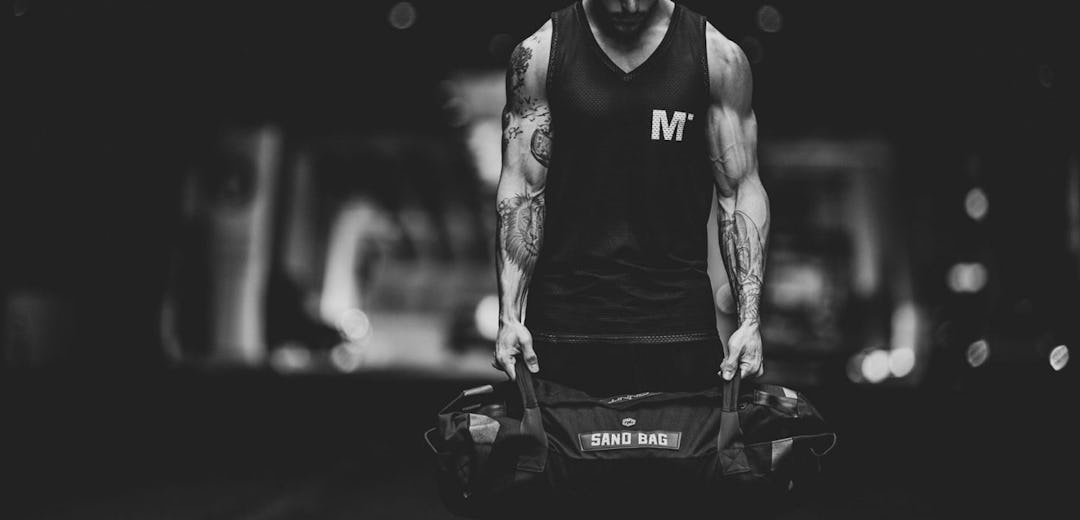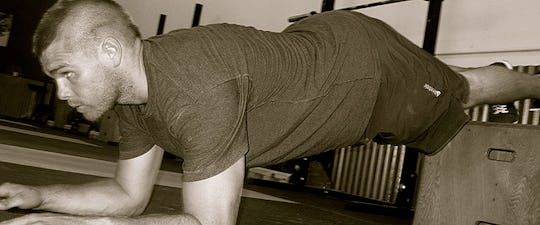Those long, multi-day treks into rough terrain are a unique challenge. The reward is high, but so is the risk, and I believe your training goals should start there: the reduction of risk. Rock, rivers, elevation, and extreme temperatures all make these missions exponentially more dangerous. Those elements, combined with the fact that you will likely be hours away from help if something goes wrong, makes this type of training a very serious subject. Your life could literally depend on it.
There are a few types of athletes that come to mind who will regularly be putting themselves into these situations. Wildland firefighters, backcountry skiers, hunters, mountain guides, and military personnel top the list. I’ve worked with all of them professionally, so I’ll do my best to explain the mindset behind their programming and why I feel each aspect is so important.
Unconventional Training Method #1: Building Durability with Kettlebell Training
First and foremost is durability. In my opinion this is something that separates some of the best athletes in the world from those who are just good. The capacity to resist injury is incredibly important in the athletic world. You could be the best quarterback on the planet, but if you’re always hurt, you’re always on the sideline.
In the case of the above scenarios, durability can mean the difference between having a good story to tell your friends, or finding yourself in one of the scariest situations of your life. Imagine this one: you and your hunting partner are scouting for elk 4 miles into the wilderness and are crossing a small creek. Your partner slips on a rock and twists his knee, falling into the water. It’s October, you’re 8,000 feet above sea level, and you have only a couple of hours until it gets dark. Your partner can barely walk and now he’s soaking wet. What’s your play?
These situations can arise faster and easier than you might think, and it’s important to be as strong as possible to avoid getting hurt. We’ve all heard it: “Stronger people are harder to kill,” so my best advice for durability is to get strong. It’s like having a suit of body armor to protect you, and stronger tendons and ligaments will resist strains and tears better than weak ones.
I recommend focusing on the vulnerable areas such as knees, hips, and lower back by squatting, deadlifting, and pressing each week. These movements are simple, but they are the best for building a strong, stable core and joints. I’m partial to barbells, however you have to use what’s available, so kettlebells, dumbbells, and sandbags will do here as well.
Unconventional Training Method #2: Building Work Capacity with Sandbag Training
Your second goal of training is the capacity to work under a load. You can’t go multiple days without carrying gear, so you’ll undoubtedly be doing hours and hours with a backpack. I have a few exercises I like for this purpose, and they’re grueling! Sandbag Get Ups, sandbag shoulder carries, and high volume weighted step ups with a pack are the three that come to mind. The only way to get better at these is to put some weight on your shoulders and go for it.
A military athlete in Jackson, WY uses a step up test for the final piece of “Operator Ugly” involving 750 step ups onto a 16” bench in under 30 minutes. Oh, and you have to wear a 25lb pack or weight vest. This is a pretty good indicator of your ability to put your head down and work hard under weight for long periods of time – and it’s a freakin’ gut check!
It’s important to understand how much more work a 30-40 pound backpack causes over the course of a few days. That weight can cause a significant calorie deficit for someone who’s fit, let alone someone who doesn’t prepare. Cramping, exhaustion, or a simple lack of work capacity can slow down a group, and if you have a partner who isn’t used to carrying that load it gets to be a problem come day three of your trip.
You plan for a certain amount of food and water, so having to slow down and take extra time on the trails is not always a good option. Be mindful of how you hydrate and eat during these hikes, because you don’t want to dig yourself too far into a hole.
Unconventional Training Method #3: Building Stamina & Recovery with Bodyweight Training
Finally, we have stamina and the ability to recover. This is the reason I send my hunters on day-long 10-20 mile hikes over the weekend when they aren’t in the gym. You need to get your body used to the volume by actually getting on the trail a few times and pushing through a long one. We don’t have to get too crazy here, but going out for a 5-6 hour hike is going to help your body and brain adapt to the abuse it takes on the mountain over time, and trains you to recover better from day-to-day so that you don’t wake up in your tent too sore to move on the second day.
I also use a combination of high volume bodyweight squats and lunges to train the legs for this same thing. Then I suggest some eccentric loading exercises because skiing and downhill hiking or running require quite a bit of eccentric strength and endurance. You need to hit some longer days to build that stamina up, and I don’t really like people doing more than 60-90 minutes in the gym, so I send them onto the trail, sometimes having them put a few bottles of water or some big rocks in their pack to increase the weight for training purposes.
Putting It All Together: The “Hard to Kill” Unconventional Training Routine
The question now is how do we put all of this stuff together in an organized fashion to train for events? Depending on the athlete’s level of fitness, I like to start 6 or 8 weeks out and work up to some of the tougher days. I’ll outline what a typical week of training would look like for one of our guides or big game hunters who spend a lot of time out there grinding away on their own. It’s nothing glamorous, and it would be fairly repetitive over the training cycle but it would be progressive to ensure fitness gains in the areas that I see as important to the task.
Workout 1 – Monday
Warm Up
A1: Sandbag Get Ups: 10 min x 60lb bag
B1: Work up to a heavy Back Squat, then complete:
C1: Back Squat – 5 sets x 3 reps x 80% of your 1RM x 2-3 min rest
D1: Step Ups – 5 rounds x 100 reps (50 each leg) x 15lb backpack
D2: Weighted Sit Ups – 5 rounds x 15 reps x 25lb plate
D3: Push ups – 5 rounds x 15 reps
Rest 30 seconds between rounds
E1: Kettlebell Romanian Deadlift – 3 rounds x 8 reps
E2: Elevated Plank – 3 rounds x 60 sec
Workout 2 – Tuesday
Warm Up
A1: Jogging – 10 min x light stretching
B1: Air Squat – 7 rounds x 10 reps
B2: Lunges – 7 rounds x 5 reps each leg
B3: Jumping Lunges – 7 rounds x 5 reps each leg
B4: Jumping Squats - 7 rounds x 5 reps
B5: Run 200m - 7 rounds
Rest 60 seconds between rounds.
Workout 3 – Wednesday
Warm up
A1: Jump Rope – 4 rounds x 60 sec
A2: Pull Up – 4 rounds x 5 reps
A3: Push Ups – 4 rounds x 10 reps
Light stretching and foam rolling
B1: Military Press – 5 rounds x 5 reps (increasing weight each round until 5 reps is hard)
B2: Weighted Pull Ups – 5 rounds x 5 reps
C1: Sandbag Shuttle – 6 rounds x 200m with 60 lb as fast as possible x 1 min rest
D1: Elevated Plank – 3 rounds x 60 sec
D2: Heavy Backwards Sled Drag – 3 rounds x 50m
D3: Single Leg Hip Bridge – 3 rounds x 15 reps (each side)
Workout 4 – Thursday
Recovery Day
A1: Run – 30 – 45 min moderate pace
Workout 5 – Friday
Warm Up
A1: Bike Ride – 3 rounds x 2 min
A2: Kettlebell Swings – 3 rounds x 10 reps x 44lb
A3: Bulgarian Split Squats – 3 rounds x 5 reps (each leg)
Light stretching
B1: Work up to a Heavy Deadlift
C1: Deadlift – 5 sets x 3 reps x 80% of 1RM x 2-3 min rest
As many rounds as possible in 20 minutes of:
D1:Sandbag Get ups – max rounds x 8 reps
D2:Ankels to Bar – max rounds x 8 reps
D3: Renegade Row max rounds x 8 reps x 20lb dbs
D4: Step ups – max rounds x 50 reps x 20lb pack
Workout 6 – Saturday
A1: Hike – 10 miles x 20lb pack
Workout 7 – Sunday
Full Rest




)





